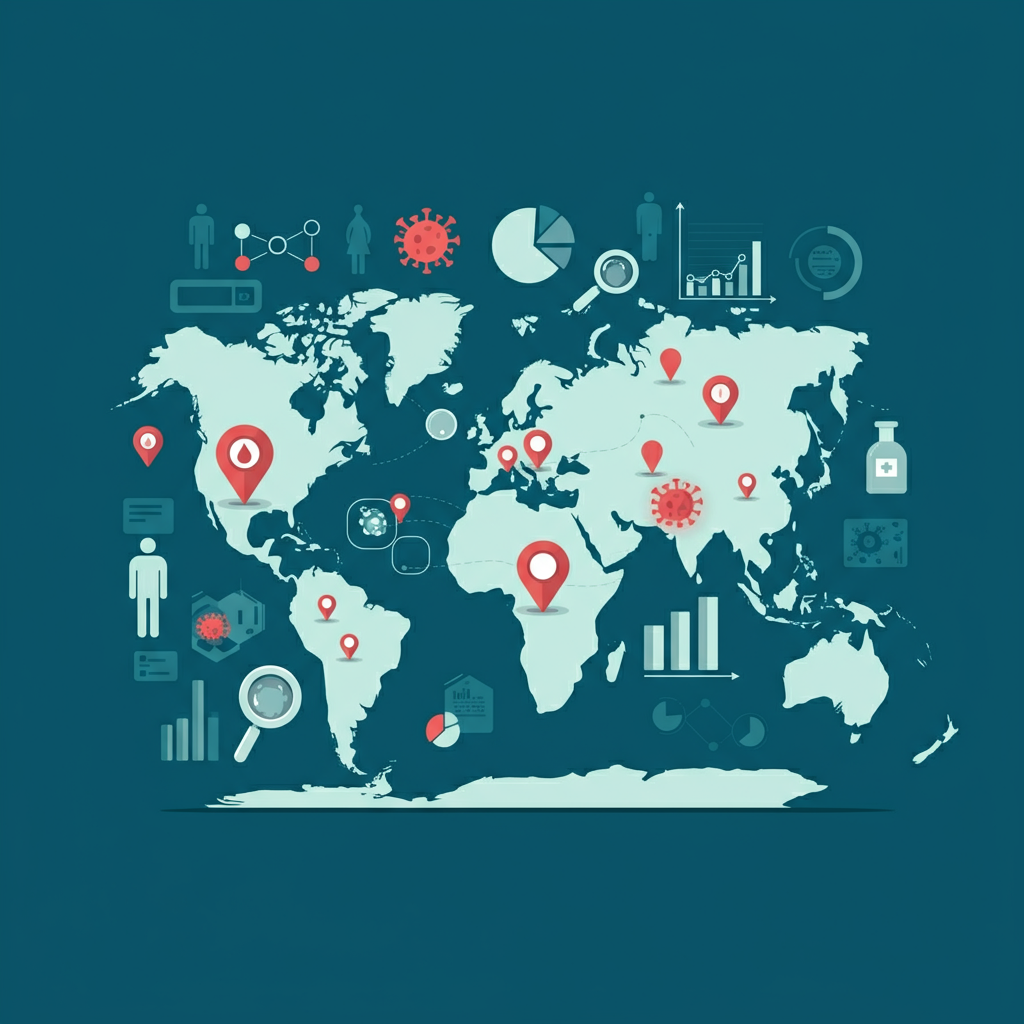
Epidemiology : Understanding Disease Patterns and Their Impact on Public Health
Epidemiology is the science of studying disease patterns, causes, and effects in populations. It plays a critical role in safeguarding public health by enabling us to understand how diseases spread, who they impact the most, and how they can be controlled or eradicated. This guide dives deep into the core principles, methods, and importance of the condition in addressing public health challenges and advancing global health initiatives.
What is Epidemiology?
Epidemiology definition: It is the branch of medicine that investigates the distribution and determinants of health-related events in populations. Simply put, it’s the study of “who gets sick, why, and how we can prevent it.”
Epidemiology serves as the foundation of public health decision-making, offering data-driven insights into disease prevention and control. Whether it’s identifying the source of infectious disease outbreaks or monitoring chronic disease trends, the condition shapes policies, interventions, and medical advancements.
Core Principles of Epidemiology
Every epidemiological investigation is built on several fundamental principles:
- Distribution: Understanding the “who,” “where,” and “when” of diseases. For example, how a virus impacts people by age group or geographical location.
- Determinants: Identifying the causes or risk factors behind diseases, such as smoking and lung cancer.
- Frequency: Measuring how common a disease is within a population using concepts like incidence (new cases) and prevalence (existing cases).
- Prevention: Developing strategies based on research to reduce disease risk or spread.
Types of Epidemiological Studies
Epidemiological studies vary depending on the objective. The main types include:
Observational Studies
These studies involve observing populations without intervention:
- Descriptive Studies track patterns of diseases (e.g., rates of flu in a region).
- Analytical Studies explore potential causes, such as the association between obesity and diabetes.
Experimental Studies
Here, researchers introduce interventions:
- Clinical Trials test the effectiveness of drugs or vaccines.
- Field Trials assess preventive measures (like mosquito nets for malaria).
Famous Example:
The Framingham Heart Study, an ongoing cohort study, has been instrumental in identifying risk factors for cardiovascular diseases, such as high cholesterol.
The Role of Epidemiology in Public Health
Disease Prevention and Control
From vaccination programs to lifestyle recommendations, the condition informs preventive measures for diseases like influenza or diabetes.
Health Policy Development
Epidemiological research helps shape public health policies, such as smoking bans or nutritional labeling on packaged food.
Resource Allocation
By identifying at-risk populations, governments and organizations can prioritize funding for healthcare initiatives effectively.
One notable case is the Polio Eradication Initiative, a global effort supported by epidemiological monitoring to eliminate polio through widespread vaccination.
Epidemiological Methods and Tools

The condition relies on robust methods and tools, including:
- Surveillance Systems: Monitoring the spread of diseases through platforms like the CDC and WHO databases.
- Data Analysis Tools: Software like SAS and R for statistical modeling.
- Mapping Tools: Geographic Information Systems (GIS) for visualizing disease hotspots.
During the 2009 H1N1 Pandemic, these methods were instrumental in tracking infections and deploying critical resources quickly.
Careers in Epidemiology
The condition careers offer diverse opportunities in academia, government, healthcare, and private research organizations. Popular roles include:
- Epidemiologists: Researchers studying disease patterns.
- Biostatisticians: Professionals analyzing health data.
- Field Epidemiologists: Experts managing disease outbreaks on the ground.
Whether advising policymakers or investigating unusual disease clusters, these professionals play a pivotal role in public health.
Epidemiology vs. Biostatistics
Though closely related, epidemiology and biostatistics differ in focus:
- Epidemiology is about identifying and addressing health issues, such as why certain diseases occur.
- Biostatistics involves analyzing data collected during epidemiological studies to draw conclusions.
Together, they create a powerful synergy to tackle public health challenges.
Epidemiology in the Context of COVID-19
The epidemiology of COVID-19 has underscored the importance of this field. Key contributions include:
- Identifying high-risk groups (e.g., elderly individuals and those with preexisting conditions).
- Tracking the virus’s spread through surveillance and contact tracing.
- Evaluating vaccine efficacy using clinical trials.
Lessons learned from COVID-19 will continue to shape our readiness for future pandemics.
Epidemiology of Cancer
Understanding the epidemiology of cancer involves studying risk factors like smoking (as researched in the landmark 1950 British Medical Journal study) or environmental exposures. Epidemiologists also investigate cancer clusters, which are areas with unusually high rates of specific cancers, to identify possible causes.
Additional Insights
Ethical Considerations in Epidemiology
Epidemiologists face ethical challenges, such as ensuring informed consent and protecting privacy in studies. Adhering to ethical standards safeguards both participants and the integrity of research.
Global Epidemiology
Diseases such as HIV/AIDS, malaria, and tuberculosis require global epidemiological efforts. Collaboration between organizations like WHO and local governments is critical for addressing these issues effectively.
Data Visualization in Epidemiology
Effective data visualization tools, such as interactive maps and bar charts, help communicate findings clearly to stakeholders and decision-makers.
The Role of Technology in Epidemiology
Advancements like electronic health records, wearables, and predictive modeling software (e.g., AI-based algorithms) have revolutionized modern condition.
A Bright Future for Epidemiology
Epidemiology remains a dynamic and evolving field. With growing challenges like antibiotic resistance, climate change, and emerging infectious diseases, its importance continues to surge. For students, professionals, and policymakers, understanding and leveraging the condition effectively will shape a healthier future for all.
Next Steps
Considering a career in epidemiology? Begin by exploring resources from the CDC, WHO, or top academic programs specializing in public health . With the power to improve countless lives, the field offers endless opportunities to make a meaningful impact.



Pingback: Disease Types and Prevention Strategies Made Simple